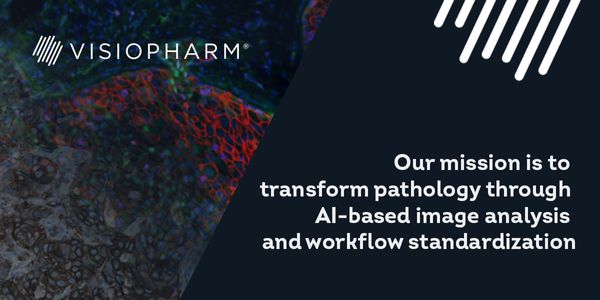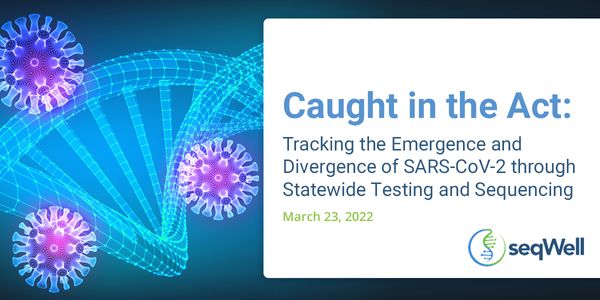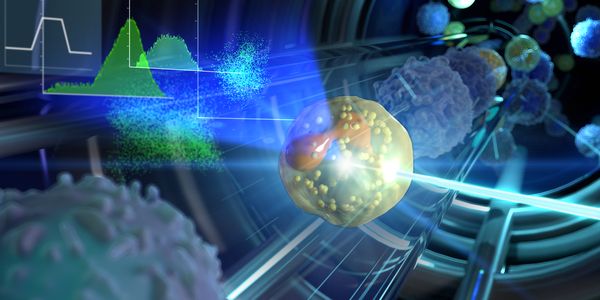Computer Science
Computer science is the study of computers and computing as well as their theoretical and practical applications. The study of computer science involves systematically studying methodical processes (such as algorithms) in order to aid the acquisition, representation, processing, storage, communication of, and access to information. Computer Science degrees include the training of various code languages.
-
JUN 01, 2022 | 10:00 AMDate: June 1, 2022 Time: 10:00am (PDT), 1:00pm (EDT), 7:00pm (CEST) The AI Microscopy Symposium, offers an unique forum for presenting and discussing the latest AI-based technologies and too...Speaker: Yicong Wu , Vijay Rajagopal , Afshin Khadangi , Parmida GhahremaniSponsored By: Leica MicrosystemsMAY 19, 2022 | 8:00 AMDate: May 19, 2022 Time: 8:00am (PDT), 11:00pm (EDT), 5:00pm (CEST) Mass spectrometry (MS)-based proteomic technologies are increasingly applied in a clinical context for disease classific...Up until now, Big Data in healthcare has failed to drive any real progress in curing disease. However, we have just now reached a cost and throughput threshold in sequencing and bioinformati...
Regardless of method, single cell RNA-seq only captures a small fraction of the transcriptome of each cell. Often, this is due to inherent limitations of the methodology as reads ‘drop...
Speaker:
Dante DeAscanis
The CYP2D6 enzyme metabolizes approximately 25% of commonly used pharmaceuticals and is of intense pharmacogenetic interest. Polymorphisms in CYP2D6 can alter an individual’s response...
The human genome encodes 25,000 genes. But the biological complexity inherent in polygenic traits is a clear sign that the whole is greater than the sum of its parts. Genes, gene products, a...
Infectious disease monitoring on Oxford Nanopore Technologies (ONT) platforms offers rapid turnaround times and low cost. Tracking low frequency intra-host variants provides important insigh...
MAR 29, 2022 | 7:00 AM
Date: March 29, 2022 Time: 7:00am (PDT), 10:00pm (EDT), 4:00pm (CEDT) Register to this free webinar to learn how data integrity problems can be prevented in the lab and what are the connecti...
MAR 24, 2022 | 10:00 AM
Date: March 24, 2022 Time: 10:00am (PDT), 1:00pm (EDT), 7:00pm (CET) Easy-to-use AI-based deep learning is now integrated as the standard analysis methodology in our best-in-class analysis s...
MAR 23, 2022 | 11:00 AM
Date: March 23, 2021 Time: 11:00am (PDT), 2:00pm (EDT), 8:00pm (CEDT) In this presentation, Dr. Middleton will review the development and deployment of large-scale saliva-based COVID-19 test...
Neuroscience is experiencing an exciting era of integrating novel materials and tools to record neural activity made possible through significant advances in materials science, electrical en...
MAR 02, 2022 | 9:00 AM
Date: March 02, 2022 Time: 9:00am (PST), 12:00pm (EST) Single cell RNA-seq is known to only capture a small fraction of the transcriptome of each cell. Often, this is due to inherent limitat...
The explosion of biomedical data such as in genomics, structure biology and pharmacology can provide new opportunities to improve our understanding of human physiology and disease. Understan...
Speaker:
Alexander Sebastian Hauser, PhD
Presented at: Drug Discovery & Development Virtual Event Series 2022
Integrating external and internal ‘omics data is a key element of hypothesis generation, target identification, and biomarker prioritization when it comes to drug discovery. It is neve...
Speaker:
Joseph Pearson, PhD
























